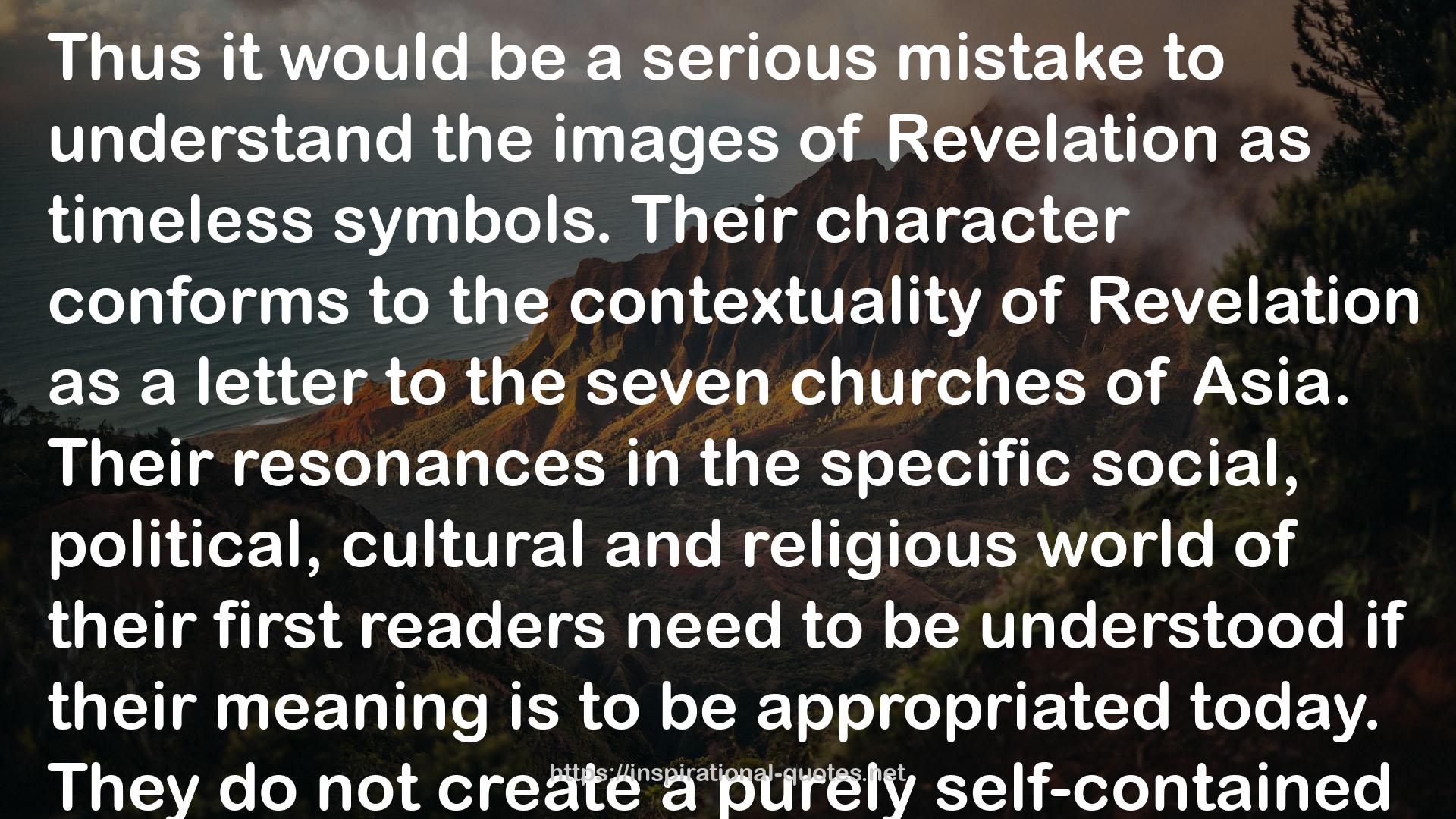" Thus it would be a serious mistake to understand the images of Revelation as timeless symbols. Their character conforms to the contextuality of Revelation as a letter to the seven churches of Asia. Their resonances in the specific social, political, cultural and religious world of their first readers need to be understood if their meaning is to be appropriated today. They do not create a purely self-contained aesthetic world with no reference outside itself, but intend to relate to the world in which the readers live in order to reform and to redirect the readers’ response to that world. However, if the images are not timeless symbols, but relate to the ‘real’ world, we need also to avoid the opposite mistake of taking them too literally as descriptive of the ‘real’ world and of predicted events in the ‘real’ world. They are not just a system of codes waiting to be translated into matter-of-fact references to people and events. Once we begin to appreciate their sources and their rich symbolic associations, we realize that they cannot be read either as literal descriptions or as encoded literal descriptions, but must be read for their theological meaning and their power to evoke response. "
― Richard Bauckham , Theology of the Book of Revelation
